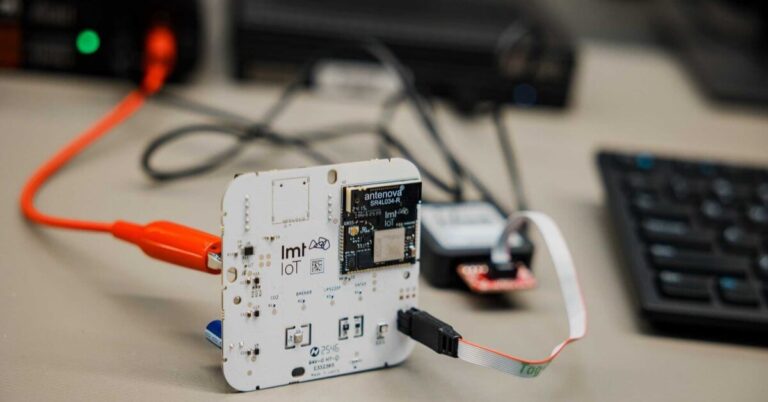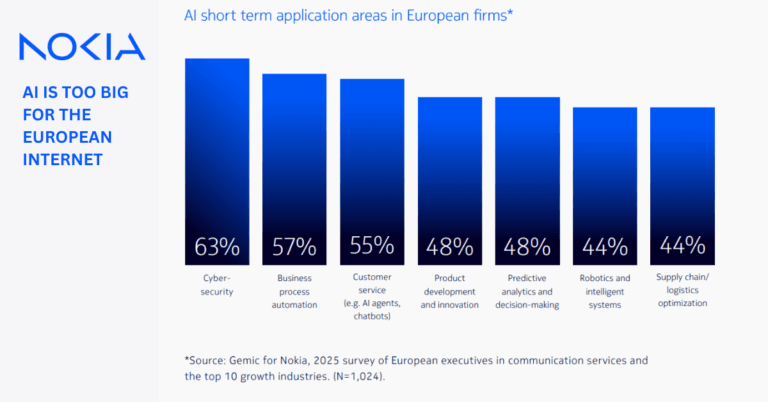Why Nokia’s Oulu R&D campus matters for AI-native 5G/6G now
Nokia’s “Home of Radio” in Oulu arrives as operators and enterprises race to build AI-ready, energy-efficient networks under tighter security and supply chain constraints in Europe.
AI-native RAN needs integrated R&D-to-manufacturing
AI is shifting network design from throughput-first to data- and compute-aware architectures, where radios, baseband, and transport must expose telemetry for model training and inference at the edge. Consolidating 3GPP standardization, silicon design, radio development, lab verification, and New Product Introduction (NPI) in one campus shortens feedback loops between research, productization, and manufacturing. That is essential as the industry transitions through 5G-Advanced (3GPP Releases 18–19) to early 6G concepts such as joint communication and sensing, RAN compute offload, and AI-native control loops.
European security and supply assurance for 5G/6G
By designing, testing, and building secure 5G and 6G radio networks in Finland, Nokia strengthens European supply assurance and aligns with EU security frameworks such as the 5G Toolbox and NIS2. Co-location with NATO’s DIANA test center ecosystem signals dual-use priorities: resilient civilian networks that can meet defense-grade requirements for assured connectivity, interference resilience, and cyber-hardening. For operators, this means greater transparency into provenance, compliance, and lifecycle security.
Sustainability-by-design for energy-efficient RAN
Power and cooling dominate RAN total cost of ownership, and AI workloads amplify the challenge. The Oulu site runs on renewable energy, operates one of the largest CO2-based district heating/cooling plants, and returns surplus heat to warm roughly 20,000 local households. With a 100% waste utilization rate and 99% CO2 avoidance claimed at the campus, the facility serves as a proving ground for energy-aware radios, silicon, and software that must meet tightening ESG targets and Scope 3 expectations.
Inside Nokia’s “Home of Radio” in Oulu
The campus brings together about 3,000 experts across a 55,000 m² footprint that spans advanced labs, manufacturing, and offices to accelerate the entire lifecycle of radio innovation.
End-to-end lifecycle: 3GPP to NPI in one campus
The immediate focus centers on 5G and 5G-Advanced, including 3GPP standardization work, System-on-Chip development, radio/baseband hardware and software, and intellectual property creation. The integrated Oulu Factory drives NPI for 5G radios and basebands, enabling faster ramp from prototype to volume and tighter DFM/DFT feedback into R&D. Real-world and simulated field environments on site allow performance, interoperability, and resilience testing before global rollout.
Custom silicon, Massive MIMO and energy-saving radios
Nokia is investing in custom silicon and RF innovation that underpin Massive MIMO and energy-saving features. Oulu teams will continue advancing radios such as Osprey and Habrok while preparing the path toward 6G-era capabilities. Expect more AI-driven beamforming optimization, power amplifier efficiency gains, and scheduler/LLS improvements targeting spectral efficiency and RAN energy KPIs—key levers for operators as traffic mixes change with edge AI and immersive applications.
Integrated testbeds with DIANA and academia
Close collaboration with universities, startups, and the NATO DIANA network expands access to novel materials, algorithms, and cyber-resilience tooling. This ecosystem approach enables experimentation with open and disaggregated RAN interfaces, time-sensitive networking, NTN integration, and advanced security testing, reducing the risk of surprises in multivendor deployments and mission-critical use cases.
What it means for operators, enterprises and defense
Nokia’s Oulu investment signals where the radio roadmap is heading and how buyers can de-risk AI-era network upgrades.
What service providers should track
– Energy-per-bit and site-level power orchestration embedded in radios and baseband software, with verifiable lab-to-field deltas.
– AI-native features in 5G-Advanced (self-healing cells, anomaly detection, traffic prediction) that can run on RAN compute or MEC, plus toolchains for data governance.
– Supply chain assurance: European design, testing, and manufacturing that simplifies compliance reporting and improves component visibility.
– Interop with open interfaces where applicable, and performance of Massive MIMO under dense urban and FDD spectrum constraints.
Opportunities for enterprises and government
Private wireless and on-prem edge benefit from radios tuned for deterministic latency, high uplink, and secure slicing. The Oulu testbed profile—civil plus defense—suggests progress in hardening for utilities, transport, and public safety, where certification and sovereign operations matter. Expect more options for ruggedized gear, integrated positioning/sensing, and lifecycle services that address compliance and mission assurance.
Risks, dependencies and open questions
Key variables include how quickly AI features translate into field-proven OPEX savings, the maturity of RIC/xApps/rApps ecosystems in brownfield networks, and the execution pace from silicon to software across releases. Operators should validate claims on energy savings, scheduler gains, and multi-vendor interop against their spectrum holdings and traffic profiles.
Next steps for AI-ready network upgrades
A pragmatic roadmap and disciplined validation can turn AI-era radio upgrades into measurable performance and cost outcomes.
Build an AI-ready 5G-Advanced/6G roadmap
Map 3GPP Release 18–19 features to concrete use cases—uplink-heavy video, industrial control, or emerging sensing—and align with spectrum strategy and RAN compute placement. Prioritize radios and baseband platforms that expose rich telemetry and support near-real-time control to feed AI pipelines.
Prioritize validation and RAN energy KPIs
Use vendor labs like Oulu’s to pretest Massive MIMO performance, scheduler behavior, and energy features under your band plan and traffic mix. Define consistent metrics—Joules/GB, cell-edge throughput, and carbon intensity per site—and require before/after audits in trials.
De-risk European supply, security and compliance
Leverage European R&D and manufacturing for security attestations, SBOM transparency, and alignment with EU directives. For critical sectors, evaluate dual-use hardening options emerging from collaborations with initiatives such as DIANA.
Bottom line: Nokia’s Oulu campus is more than a facility opening—it is a signal that the RAN will be built and validated for an AI-first era where energy, security, and time-to-field are the competitive battlegrounds.







































